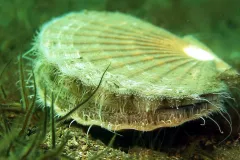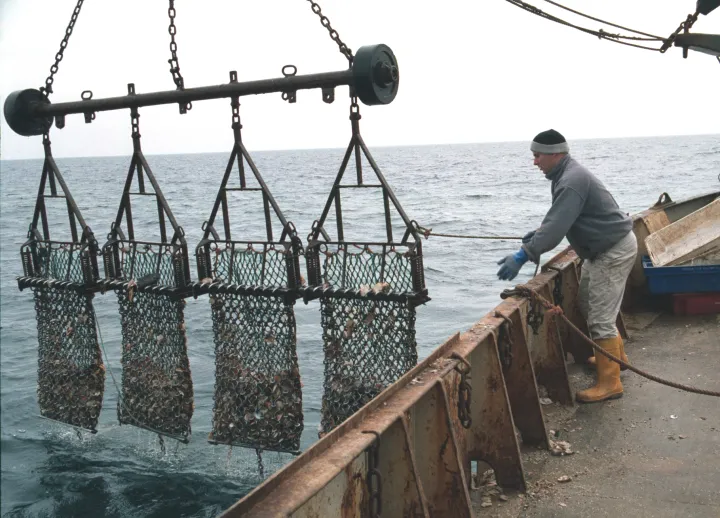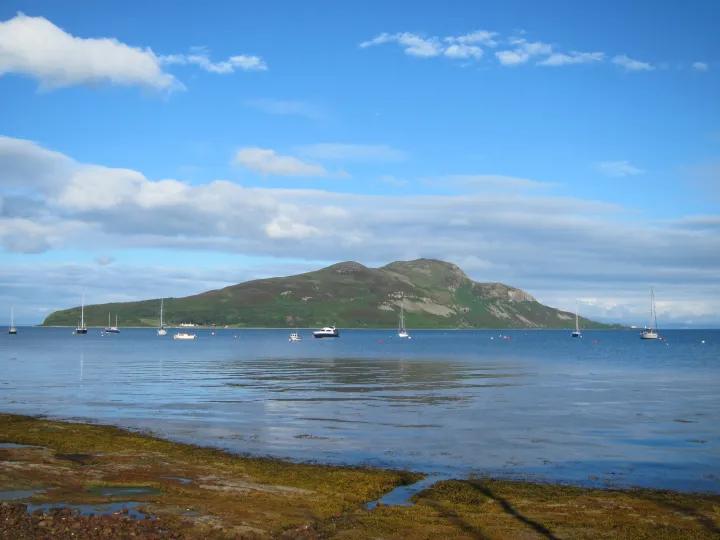A lesson learned twice: The Story of Scotland’s Marine Protected Areas

Howard Wood was 15 years old when his family moved to the Isle of Arran and he got his first job on a fishing boat. He didn’t help out on big commercial fishing boats or trawlers, which have fished the waters of Scotland’s Firth of Clyde for herring, cod and haddock for centuries; rather, he assisted sea anglers who fished with a hook and line. “You could fill boxes of fish just going out with a fishing rod,” he remembers of the region in the 1960s. “When I came, that was just how it was. At that age you take things for granted.”
When Wood grew into adulthood, he took over his family’s gardening business. Yet he remained an avid diver and spent lots of time in the water. What he saw disturbed him. In the 1970s, he’d see shoals of pollock and cod, as well as flatfish like turbot and plaice. But by the 1980s, the shoals grew rare — and so did deep-sea fish like rays and anglerfish. “You would only see one occasionally. And then you’d dive for a whole year and you wouldn’t see any at all,” he says. “It was a really drastic reduction in the amount of fish and the amount of marine life.”
Wood didn’t know it at the time, but he stopped seeing fish for a reason. And when he later learned what happened, the stubborn gardener would not let it stand.
History Repeats Itself
For centuries, the Firth of Clyde supported many robust fisheries. But by the 1950s, fishermen struggled to catch the fish they needed to feed their families. There were more fishing ships than ever, and they used new technologies to catch many fish at once. It seemed that there were not enough fish in the sea.
Less than a century earlier, Firth of Clyde fishermen faced the very same problem. In the 1880s, their catches dropped after steam-powered ships (which could drag heavy trawl nets that catch anything in their path and plow the seafloor along the way) removed too many fish. They recognized that if they wanted to keep fishing, they needed to leave some fish in the sea to reproduce, and also protect nursery areas where young fish feed and grow up. So in 1889 they decided to ban trawling to protect fisheries over the long term.
But in the 1950s, the fishermen made a different decision: Instead of protecting habitat, they demanded trawl access to the closed areas to catch all that they could. By 1984, the Scottish government had lifted all restrictions; trawls and dredges once again scraped the seabed for prawns, flatfish and scallops and destroyed nurseries for young fish. “I can’t think of a worse thing if you want to try and recover a fishery,” says Wood.
By the 1990s, even bottom-dwelling fish stocks collapsed. All that remained were shellfish like prawns and scallops, which thrived without any fishy predators. Around 70 percent of commercial fishermen and 95 percent of recreational angler fishermen had lost their jobs, says Wood. The people of the Isle of Arran suffered without work or a ready source of food from the sea.
Wood and his diver friends were distraught, but didn’t know what do to. As a gardener, Wood knew how to plant and care for nature on land — but in the sea, it’s a different sort of work. “The difference underwater is that if you leave things to just grow, they will replenish themselves,” he says. “The only thing you need to manage is man, not nature.”
The Management of Man
By 1995, Wood’s friend Don McNeish had had enough. The diving was terrible and the region’s economy had tanked. “He rattled my cage about twenty-odd years ago and said: We need to do something,” Wood says. “And we started doing something.”
For the first few years, it wasn’t a lot — they founded COAST (Community of Arran Seabed Trust) as an environmental charity, and wrote letters to politicians and friends who might also want to restore the Firth of Clyde. Slowly they gathered momentum, and ten years later they found themselves in the center of a network that included commercial fishermen, anglers, divers, environmentalists, lawyers, and tourism operators. What these diverse groups had in common was a desire to restore marine habitats and fisheries in the Firth of Clyde.
Wood and McNeish had accidentally become community organizers. “If you build up allies — friends in different sectors with different interests — you’ve got much more chance of politicians helping and listening to you,” says Wood.
The next step was figuring out what changes they wanted to make. Wood did some research and found that, throughout the world, marine protected areas — regions protected from fishing or other human impacts to provide a safe sanctuary for sea life — worked to restore ecosystems and fisheries. By protecting some fish so they could reproduce, the benefits spilled out to a much larger area.
So they campaigned for the Scottish government to set up a small marine protected area as an experiment. In 2008, the Lamlash Bay No-Take Zone was created — a small square-mile area where fishing was banned. It was Scotland’s first community-led marine protected area.
Scientists monitored the area and, within five years, the marine ecosystem began to recover, says Wood. Populations of lobsters and scallops tripled. The adult scallops were bigger and older, which means they produce more eggs — seeds for future scallops. And the nursery areas regenerated and supported diverse seafloor habitat that provides food and protection for young cod, scallops and other species.
Bolstered by the encouraging research, in 2012 COAST proposed that the waters surrounding the southern end of the Isle of Arran (more than 100 square miles) be protected. Wood’s network of allies campaigned together and, in 2014, the Scottish government officially created the South Arran Marine Protected Area, one of a larger network of protected areas that cover 10 percent of Scotland’s seas. It isn’t a full no-take zone — prawn trawling is legal in in some areas, along with other fisheries. But it is expansive and protects many habitats, including nursery areas for herring and cod.
COAST continues to monitor the area to see whether the protection works; it could take decades to see full results. Based on what they’ve seen so far in Lamlash Bay, they’re confident it will benefit the Firth of Clyde’s marine habitat and fisheries alike.
“If you can manage man’s greed, nature will bounce back,” says Wood, who received the Goldman Environmental Prize in 2015. “And sometimes much faster than you think.”
This story was made possible by a grant from the Smithsonian Women's Committee. http://swc.si.edu/about-grants



